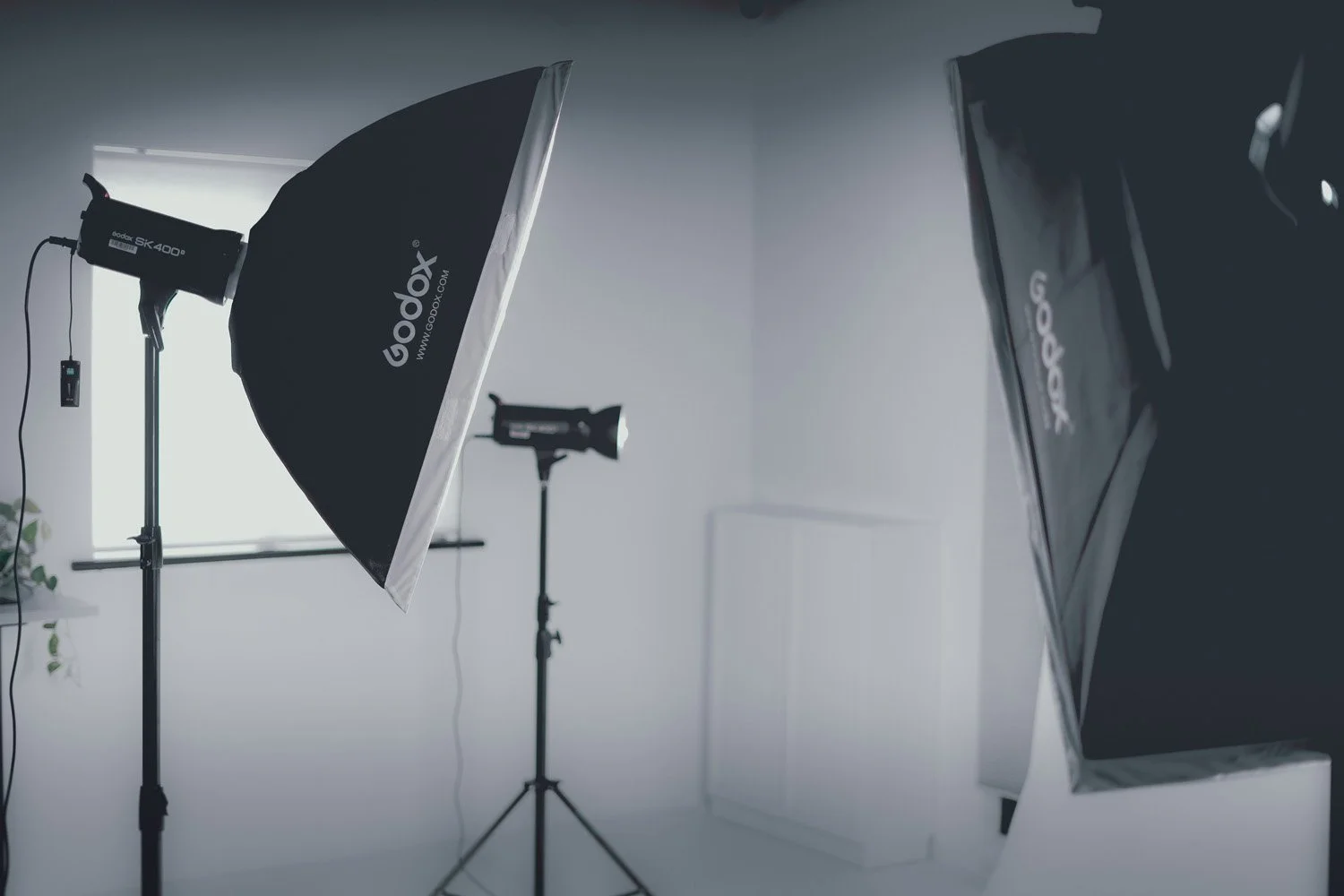Why Studio Lighting Matters
Studio lighting in professional photography is crucial for getting the right look and feel for your images. Read about indoor photography, family photography, headshots, and more.
How you light a photo can make a huge impact on the overall effectiveness of your photos.
You're probably comfortable using your phone — or a point-and-shoot camera — to document life's moments. Many of those photos look fine when taken during the day or in a bright environment. The amount of light saturates the camera sensor or film negative, leading to a nicely exposed image.
However, sometimes we notice that even in a well-lit environment, a person may seem soft or lack the punch seen in studio portraits, but why is that? How can studio lighting help your photos turn out better?
Luckily, we're here to help you learn about it. Read on to learn more.
Professional Lighting
Studio flashes (or strobes) produce an intense burst of light for a very short time.
That light entirely saturates the camera sensor, leading to a high level of information about the fine details and nuances of shadow that are lost when simply taking a candid shot. The photos pop when developed properly, and it's what professionals use to ensure that the light is perfect for any subject.
Lighting a photo is all about balance. It's essential to ensure your light is exactly where you want it and to reduce the amount of light where you don't. Your camera settings and the flash itself can help stop this problem.
You want your subject to stand out from the background. By decreasing your ISO (or increasing the shutter speed or f-stop) you can tamp down that overly bright forest or water, but now your subject is too dark. Well, that's where flash comes in to save the day.
By adding that flash burst, your subject is properly lit and your background is no longer screaming "Look at me!"
While I don't have a studio, I can bring studio lights to any location for any kind of shoot, whether it's headshots or family photos. I thrive in situations where the casual photographer struggles.
1. Backlighting
We've all experienced this moment. A beautiful lake or mountains in the background with the sun setting and you just have to take a photo with your family or friends.
It looks amazing! But our eyes have much more exposure latitude than a professional camera so it would appear that your family and the stunning backdrop look great.
Exposure latitude is the difference between the bright whites and dark shadows found in an image and how well they can be recorded (or seen). So, that same image on camera would have the sky and background well captured, but the family is almost in complete shadow.
A camera just doesn't see as well as our eyes on its own.
Some photographers will increase the level of the shadows in a program like Adobe Photoshop, and it can help. However, you'll notice a lot of noise on your family's face and it won't have that pop. When a flash unit is used to fill in the shadows and balance the sky, then you can get the image your eyes see.
2. Indoor Photography
Many notoriously bad photos happen indoors by the casual photographer because as mentioned above, our eyes see much more than our cameras. Even with the improvement of cellphone cameras, most indoor photos look like point-and-shoot images.
Either the photo is noisy because too little light is making it to the sensor or everyone in the picture has a dullness to them. Bounce lighting from the ceiling can help alleviate this problem with an on-camera flash. Off-camera flash can transform an ordinary room into a moody and rich environment.
3. High Noon Photography
High noon provides a lot of light, but it's quite possibly too much in this case. Since the sun is directly overhead, it can leave a lot of unwanted shadows in your photos.
So, while the photo will be crisp and clear, you usually have to stop down your camera to f/16 to ensure your image isn't overexposed. The term "stopping down" means making the hole through which light enters the camera smaller, much like our pupils. The problem here is that everything becomes sharp, including distracting background elements like trees and garbage on the grass.
With studio flash, you can tame the hot sun by making your camera underexpose the scene and then filling in the subject(s) with a flash burst.
You can even get that lovely background blur called "bokeh" by opening the aperture of your camera to its widest point and using something called high-speed sync. With a wide-open aperture, too much light might still be a problem even with a low ISO. The only solution is to increase shutter speed.
However, most flash units are unable to take a proper image with a shutter speed faster than 1/200 of a second. High-speed sync will send several flash bursts during the capture of the image being taken, but to you and the subject, it looks like one regular flash pulse.
So Why Does Studio Lighting Matter?
When you hire me, all those concerns are taken care of. With studio lighting, you can get the exact result you're looking for. There's no sun to deal with, and no weather to worry about.
All you have to do is sit back, relax, and have fun at your shoot. Contact me to find out more about how I can help you tell a beautiful story with your images.

